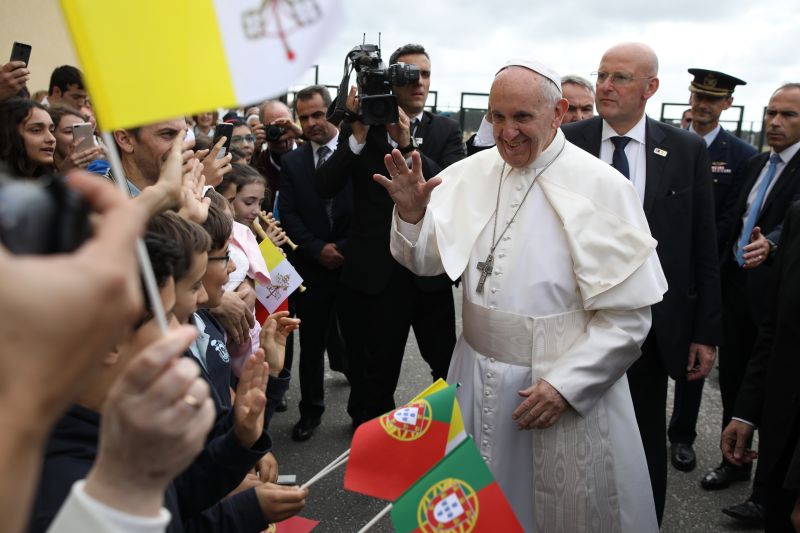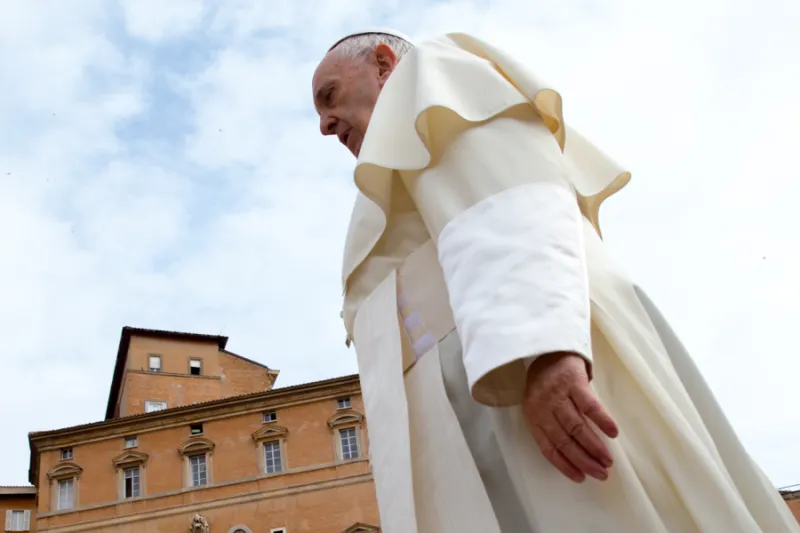
Rome Newsroom, Jan 20, 2023 / 02:08 am (CNA).
World Youth Day in Lisbon, Portugal, will open horizons and hearts, Pope Francis said in a video message to the young adults who will attend the international gathering in August.
He said: “At this meeting, during this [World Youth Day], learn to always look towards the horizon, to always look beyond.”
“Don’t put up a wall in front of your life,” the pope encouraged. “Walls close you in, the horizon makes you grow. Always look at the horizon with your eyes, but look, above all, with your heart.”
Pope Francis sent the video message on Jan. 20, fewer than 200 days before World Youth Day (WYD) 2023 in Portugal’s capital city Aug. 1-6.
Organizers met with Pope Francis and Vatican officials in Rome last week to discuss final preparations for the six-day gathering, which expects to see hundreds of thousands of participants.
In his Jan. 20 video message, Pope Francis noted that 400,000 young adults had already registered to attend World Youth Day.
“It calls my attention and fills me with joy that so many young people will go to WYD, because they need to participate,” he said.
“Thank you for having already registered so far in advance,” the pope added. “Let’s hope others will follow your example.”
Francis said though some participants may claim they are only going to the event as tourists, rather than pilgrims, “deep down, he or she has the thirst to participate, to share, to tell their experience and receive the experience of others.”
He encouraged them to open their hearts to other cultures and to the other young men and women who will be there.
“Get ready for this: to open horizons, to open your hearts,” he said.
World Youth Day was established by Pope John Paul II in 1985. The meeting is typically held on a different continent every three years with the presence of the pope.
Lisbon, a city of 505,000 people, is around 75 miles from Fatima, one of the world’s most popular Marian pilgrimage sites.
Pope Francis is expected to attend the global Catholic gathering with stops in both Lisbon and Fatima.
The last World Youth Day was held in Panama in January 2019.
In 2020, Pope Francis announced that the next World Youth Day, originally planned for 2022, would be postponed by one year due to the COVID-19 pandemic.
If you value the news and views Catholic World Report provides, please consider donating to support our efforts. Your contribution will help us continue to make CWR available to all readers worldwide for free, without a subscription. Thank you for your generosity!
Click here for more information on donating to CWR. Click here to sign up for our newsletter.







World Youth Day in Lisbon triggers favorable memories for yours truly…
While a member of an archdiocesan pastoral council (2001-4), in one of our twelve listening sessions we discovered a small parish where the YOUNG PEOPLE were gathering on Sunday evenings on their own initiative (!), nearly 100 of them (!!), to study the Catechism (!!!), and during the week at home they were even evangelizing their parents (!!!!). The galvanizing event was that a few of them had attended the 2000 World Youth Day in Rome.
I’m even reminded of the moderate success I had in teaching Confirmation for several years…for side reading St. John Paul II’s invitational 1985 LETTER TO YOUTH which preceded the first World Youth Day in 1987. Still worth using today: https://www.vatican.va/content/john-paul-ii/en/apost_letters/1985/documents/hf_jp-ii_apl_31031985_dilecti-amici.html
Can’t help but notice, now, the ALIGNMENT of the 2023 Lisbon event with the October 2023 penultimate gathering of the Synod on Synodality. Perhaps the youth will be reminded how the gone-sideways “synodality” thing was prominently appended to the report of the 2018 Synod on Young People–when that theme was never even brought up at the Synod?
And, how the slogan “LGBTQ” was also inserted from the outside, but then removed (butt now included again in synodal reports from wherever). Synodal “leader” Cardinal Baldiserri had added the term, and then rebuffed Archbishop Chaput’s polite request to remove any such reference to a “category” of persons, in place of a Catholic affirmation of each “person” as such. And, only backtracked when all (!) dozen or more groups of reviewing bishops unanimously (!) demanded he do so (the reported term was “demanded”)!
So, with these happy memories, and given more recent history, just wondering here about the possible confluence of coming events in 2023, or whether the youth event again can have the same kind of real LEADERSHIP, INTENT and EFFECT as, say, in 1985 or 2000?
Continuing to engage the younger generations under today’s circumstances is an absolutely crucial and worthy goal.
So, as the youth assemble in Lisbon for a message of hope, and “learn to always look towards the horizon, to always look beyond [‘beyond’?]”, as they be heard, will they also be leavened, reassured and evangelized by the ENTIRE HORIZON of (sometimes-called “backward”?) Catholic Tradition–one, holy, catholic, and apostolic?